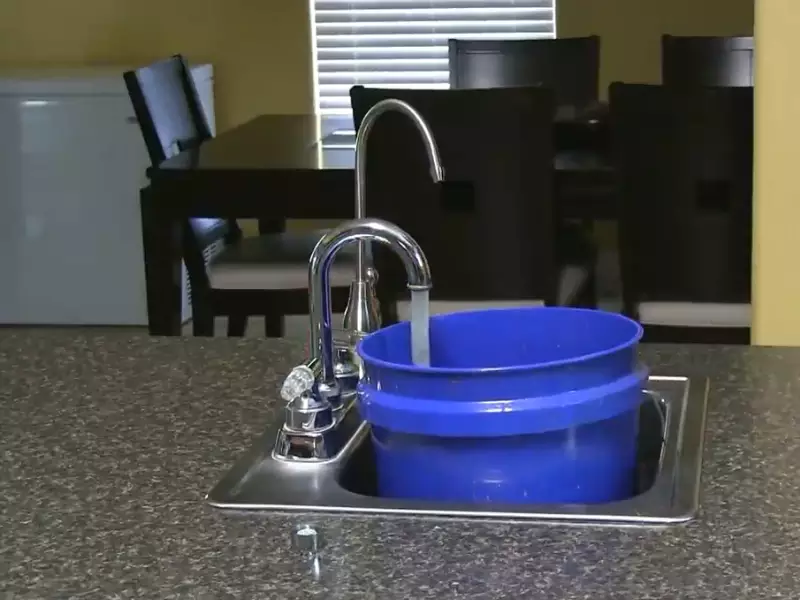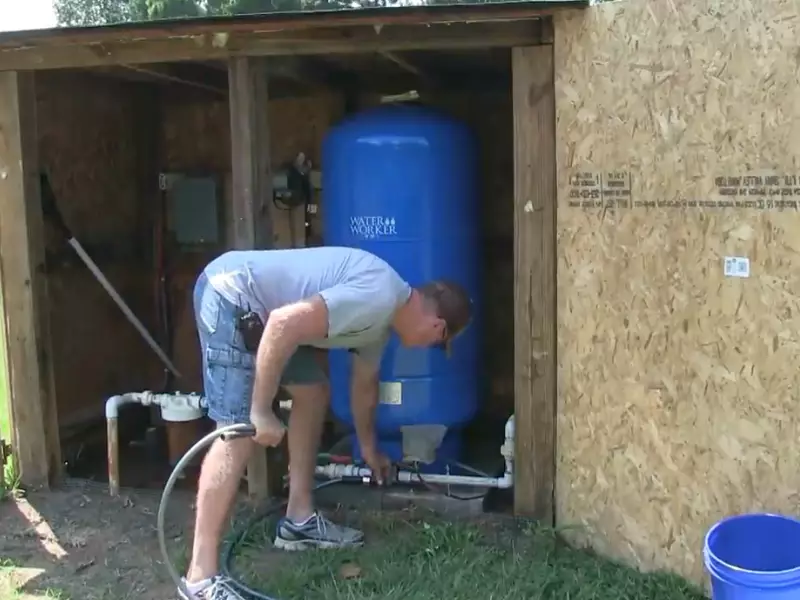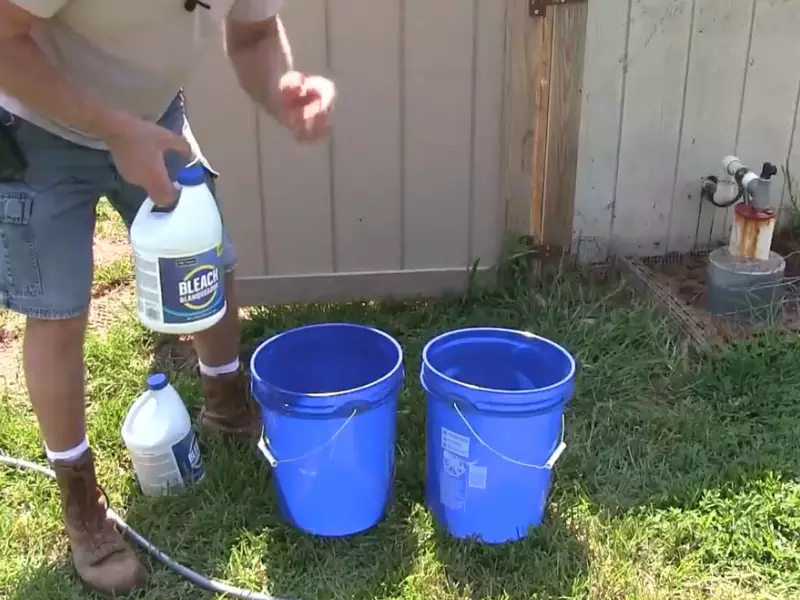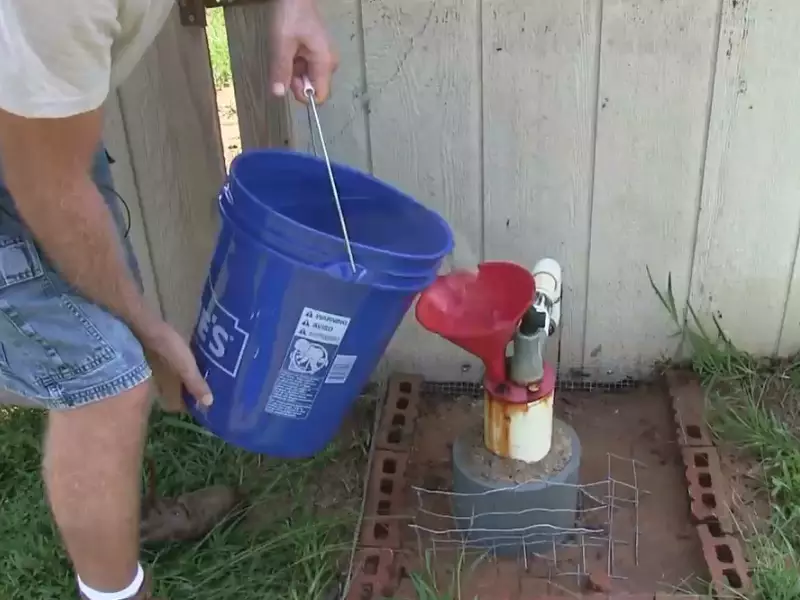Clean water plays a pivotal role in our daily lives. Ensuring its purity and safety becomes even more crucial when sourcing from personal wells. Chlorinating a well is a common practice that keeps water contamination-free and fresh for use.
The process, however, does raise questions about when it’s safe to consume the water post-treatment. The presence of chlorine, while effective in eradicating harmful elements, demands a cautious approach for human consumption.
Reasons for Chlorinating a Well
Safe drinking water is a fundamental need, and a well serves as a natural reservoir. But like other water sources, it’s not immune to contaminants. Hence, the chlorination process becomes an essential method to ensure water’s safety and purity. Let’s delve deeper into the primary reasons for chlorinating a well.

Bacterial Contamination
Groundwater is generally free of harmful bacteria. However, during periods of heavy rain or due to nearby contamination sources, harmful pathogens might infiltrate a well. Examples include E. coli and coliform bacteria. The presence of such bacteria can lead to waterborne diseases and other health issues. Chlorination proves effective in neutralizing these threats, offering a sanitized, drinkable water source.
Unpleasant Odors and Tastes
One common issue with well water is the presence of minerals like sulfur, which can impart a distinct “rotten egg” smell. Likewise, the presence of iron can give water a metallic taste. Chlorine not only eradicates harmful bacteria but also oxidizes these minerals. This oxidation process helps in neutralizing unpleasant odors and tastes, making water more palatable for consumption.
Routine Maintenance
Over time, biofilm can form on the walls of a well and its equipment. This slimy layer is a mix of bacteria, algae, and other microorganisms. Regular chlorination disrupts this biofilm layer, preventing its growth and maintaining the integrity of the well. Routine maintenance ensures that the well remains in optimal condition, safeguarding against potential health hazards.
Chlorination Process Explained
Maintaining a clean well requires a systematic approach. Chlorination, if done right, can enhance water quality significantly.
Selecting the Right Chlorine
Not all chlorine products are the same. Liquid bleach, for example, is suitable for household cleaning but might not be potent enough for well chlorination. Calcium hypochlorite and sodium hypochlorite are preferred choices. These compounds are specifically designed to treat large volumes of water effectively.
Steps in Adding Chlorine
- Measurement: Before introducing chlorine, one needs to measure the depth and diameter of the well to estimate the water volume. This step ensures accurate chlorine dosage.
- Introduction: Introduce the predetermined amount of chlorine into the well. Using a funnel or hose can make this process more straightforward.
- Distribution: After adding chlorine, it’s essential to circulate the water. Running the household taps or using a hose to feed water back into the well ensures that the chlorine mixes thoroughly.
Mixing and Circulation
A successful chlorination process hinges on ensuring that chlorine reaches every corner of the well. Proper circulation means that no part of the well remains untreated. This step might require several hours, but it ensures that chlorine reacts with contaminants and cleans the water effectively.

Waiting Period Post Chlorination
Once the well has been chlorinated, the waiting game begins. But how long should one wait?
Immediate Effects of Chlorination
Right after chlorination, the chlorine concentration in the water will be high. This heightened level can pose health risks and is not suitable for consumption, bathing, or other domestic purposes.
Decomposition of Chlorine Over Time
Chlorine doesn’t remain in the water indefinitely. As it reacts with impurities, it starts breaking down. This decomposition process reduces the chlorine concentration over time. On average, a waiting period of 12 to 24 hours is recommended, but this can vary based on initial chlorine levels and well conditions.
Factors Affecting the Waiting Period
Chlorine’s efficiency is influenced by various factors:
- Water pH: Chlorine works best in a slightly alkaline environment. If the water is too acidic or too alkaline, chlorine’s disinfecting properties can diminish.
- Temperature: Cold water can slow down chlorine’s reaction rate. Hence, during colder months, a longer waiting period might be needed.
- Initial Contamination Levels: A heavily contaminated well might require more time for chlorine to neutralize all threats effectively.
Safety Precautions After Chlorination
Ensuring that the well is safe post-chlorination is as important as the chlorination process itself.
Testing for Chlorine Residue
It’s imperative to test water for residual chlorine before deeming it safe for consumption. Over-the-counter test strips or liquid test kits can provide quick and accurate results. Only when chlorine levels are negligible or entirely absent should the water be considered safe.
Health Implications of Chlorine Ingestion
Chlorine is effective against contaminants but isn’t beneficial for human consumption in large quantities. Excessive chlorine ingestion can lead to throat irritation, stomach discomfort, and in severe cases, chlorine poisoning. Always ensure the complete breakdown of chlorine before using the water.
Methods to Remove Excess Chlorine
Sometimes, despite waiting, chlorine levels remain elevated. In such cases, several methods can expedite chlorine removal:
- Boiling: A straightforward method. Boiling water for a specific period can drive away residual chlorine.
- Activated Carbon Filters: These filters can absorb and trap chlorine, offering purified water.
- Aeration: Exposing water to air, for example, by pouring it between containers, can help evaporate some of the chlorine.

Water Usage Guidelines Post Chlorination
The water’s intended use post-chlorination can dictate the level of chlorine it can tolerate.
Drinking and Cooking
Zero tolerance for chlorine residue is the benchmark. Always ensure that the water is free of chlorine before consumption or culinary use.
Bathing and Cleaning
While a little chlorine in bathing or cleaning water is generally considered safe, always be cautious. Excessive chlorine can lead to skin dryness, irritation, and can be harmful if it gets into the eyes.
Irrigation and Outdoor Use
Gardens and plants can be sensitive to chlorine. It’s wise to test the water’s chlorine levels before using it for irrigation. Excessive chlorine can hinder plant growth and even damage certain sensitive species.
Alternative Water Treatment Methods
While chlorination is a tried-and-true method for sanitizing well water, technology and scientific advances have ushered in various other techniques. Each offers its unique advantages and fits specific situations best. Let’s examine these alternative methods closely.
UV Purification
Ultraviolet (UV) purification is a modern and environmentally friendly approach. Here’s how it stands out:
- How It Works: UV rays disrupt the DNA and RNA of harmful pathogens, rendering them inactive and unable to reproduce.
- Advantages: It’s chemical-free, meaning no addition or residue in the water. It’s particularly effective against certain bacteria and viruses that might be resistant to chlorine.
- Considerations: While effective, UV purification requires electricity and doesn’t treat other contaminants like heavy metals or chemicals.
Filtration Systems
Filtration is among the oldest and most straightforward water purification methods.
- How It Works: Physical barriers, often composed of sand, charcoal, or other materials, trap impurities and pathogens.
- Advantages: These systems can target specific contaminants, with activated carbon filters being especially adept at removing chlorine, sediment, and organic compounds.
- Considerations: Filters require regular replacement to maintain effectiveness. Also, while they can remove suspended particles and certain contaminants, they might not be as effective against all microorganisms.
Ozone Treatment
Ozone, a form of oxygen with three atoms instead of the usual two, is a potent oxidant.
- How It Works: When introduced to water, ozone breaks down contaminants and pathogens by oxidizing them.
- Advantages: Ozone treatment is powerful, leaving no harmful residues and often enhancing the taste and odor of the water.
- Considerations: Similar to UV purification, ozone treatment requires electricity. It’s also not a standalone solution and often works best when combined with other purification methods.

Tips for Maintaining Well Water Quality
Ensuring the ongoing safety and quality of well water doesn’t end with a single treatment. Regular maintenance and vigilance are paramount.
Regular Testing
Routine water tests are indispensable:
- Frequency: Aim for at least an annual water quality test. If there are known contamination sources nearby, consider more frequent tests.
- Scope: Ensure the testing covers a comprehensive range of potential contaminants, including bacteria, nitrates, and other harmful substances.
- Results: Regular testing offers peace of mind and can guide subsequent treatments or interventions.
Sealing the Wellhead
Protecting the well’s entry point is a primary defense against contaminants:
- Seals: Ensure the wellhead is adequately sealed, preventing surface water (which might contain contaminants) from entering the well.
- Inspection: Regularly check the seal for signs of wear or damage, and replace it as needed.
Avoiding Contamination Sources
Being aware of nearby potential contamination sources and taking precautionary measures is essential:
- Distance: Ensure a safe distance between the well and potential sources of contamination like septic tanks, livestock areas, or chemical storage sites.
- Landscaping: Sloping the ground away from the well can prevent pooled water, which could become a contamination source, from collecting near the wellhead.
- Awareness: Stay updated on local activities that might affect groundwater, like industrial developments or agricultural practices.
Frequently Asked Questions
How frequently should I chlorinate my well?
Routine chlorination annually or bi-annually is standard, but circumstances like contamination can demand more frequent treatments.
Can I chlorinate the well myself?
While it’s possible, hiring professionals ensures thoroughness, safety, and optimal results.
Does chlorination affect the well’s equipment?
If done correctly, chlorination shouldn’t harm the well’s equipment. However, prolonged exposure to high chlorine concentrations might lead to degradation.
Conclusion
The importance of water quality cannot be stressed enough. While chlorination is a trusted method to ensure purity, understanding the nuances of the process aids in harnessing its benefits optimally.
Being informed about the waiting period post-chlorination and the essential safety precautions guarantees the wellbeing of all users. With periodic maintenance, regular testing, and mindful practices, a well can provide safe, clean water for years to come.